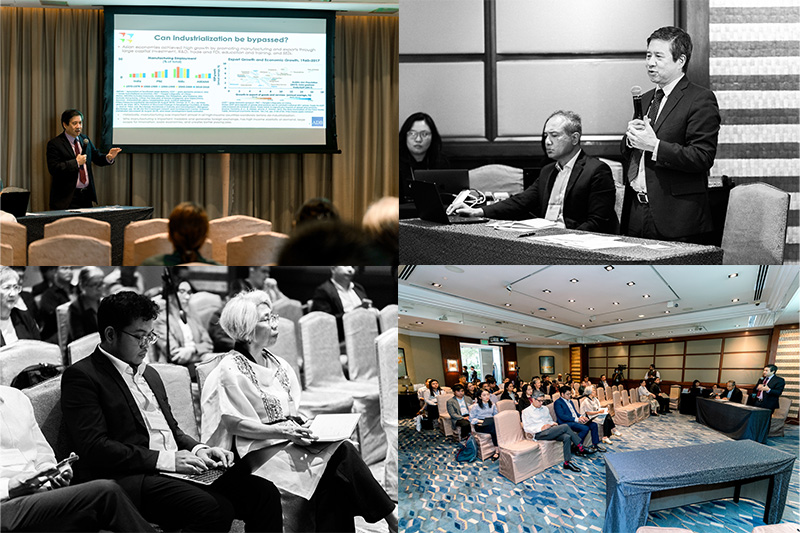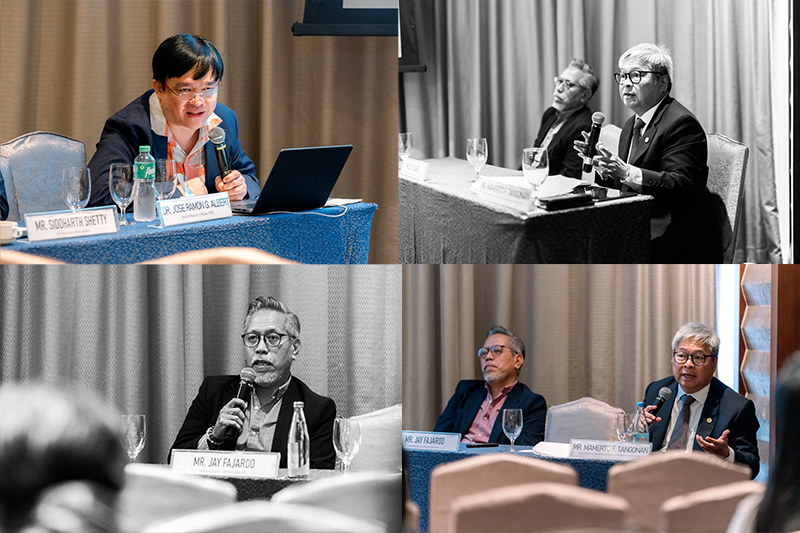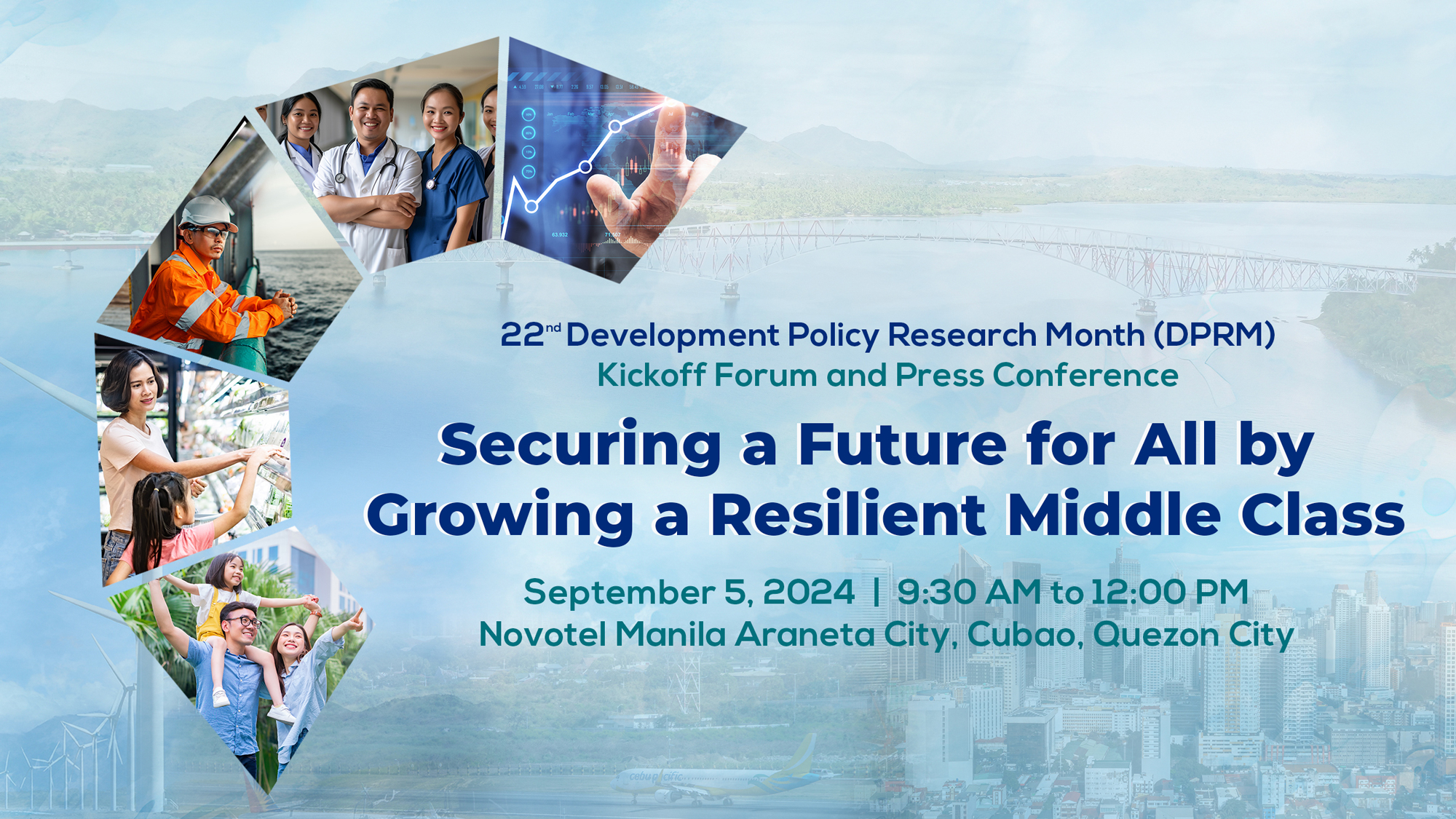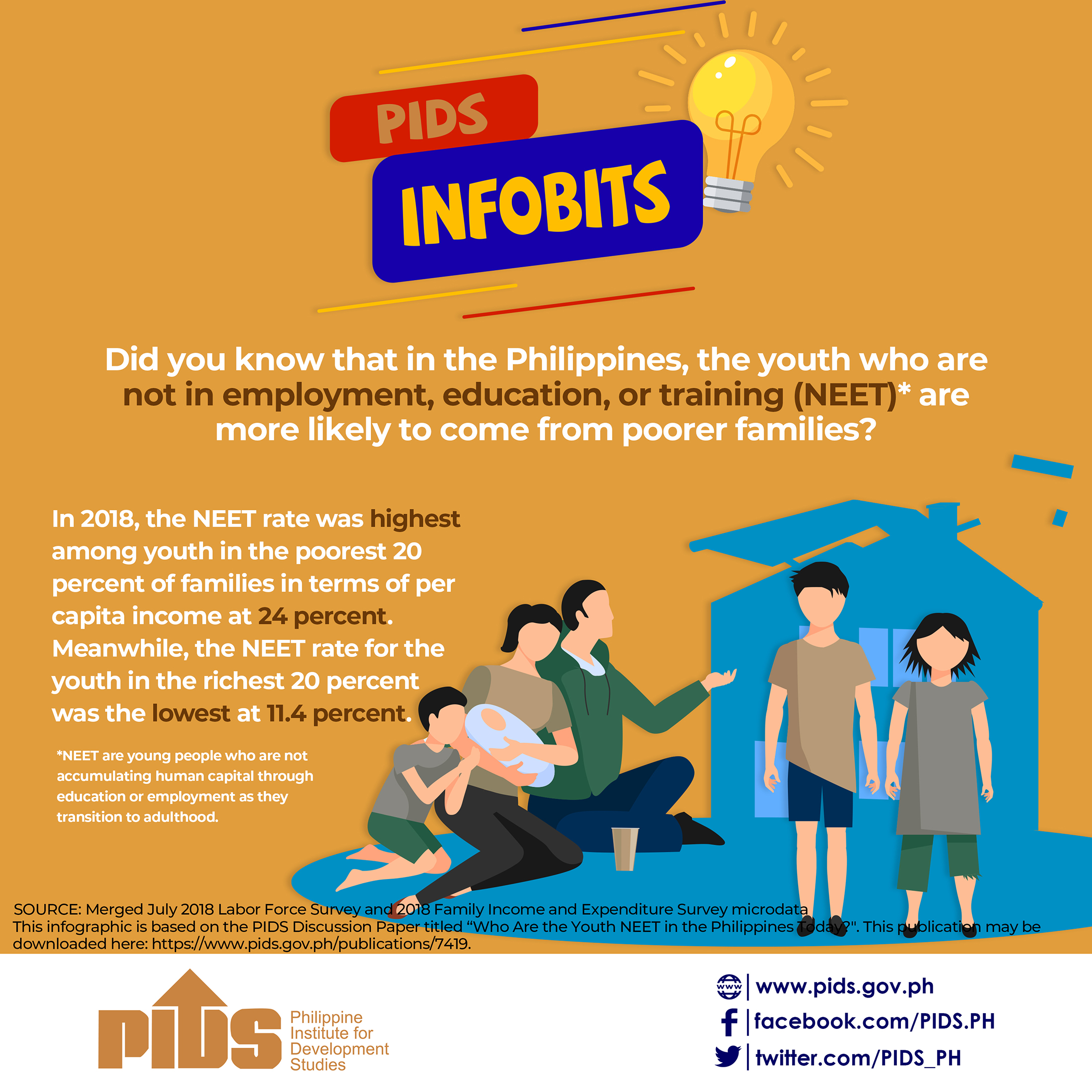To give or not to give?
When this question refers to the financial subsidy for middle class families during the pandemic, expect an immediate, heated uproar on social media. About 10.6 million or 32 percent of all families in the country are part of the middle class that covers a wide range of income levels, asset ownership, and living conditions.
The income cluster is so wide that it covers families whose income range from P18,200 to P140,200. Given the income disparity, middle class is classified in three groups – lower middle income, middle middle income, and upper middle income.
Delicate topic
Recently, Senator Cynthia Villar hit a nerve when she said that middle class Filipinos do not need financial assistance from the government since they apparently continued to receive their salaries during the community quarantine. In a matter of hours, outrage against the senator’s statement gained traction on social media. The following day, she immediately clarified and apologized for her insensitive statement.
To better understand the financial status of middle class families, here are two visuals that provide a snapshot of the middle class profile. Matrix on income groups in the income distribution is credited to CNN media network while the infographic of profile of the middle class is credited to the Philippine Development for Institute Studies.
Middle class realities
The wide income disparity obviously puts middle class families in various situations during this crisis. Since more than half of the middle class are salaried, when the companies they worked for ceased operations due to the lockdown, a good number stopped receiving their monthly pay.
This column attempts to shed some light on the realities of middle class families like ours during this crisis. Thanks to my friends who belong to various tiers in the middle class income cluster who shared their situations and insights putting a face to the actual struggles that we are experiencing right now.
We are the middle class, and these are our stories in the midst of this pandemic.
…lower middle income class
The families of Judiel, Jenna, and Crissy are all in the lower middle income group. Judiel was employed in a travel agency that has since closed shop after the lockdown. She availed of the P8,000 Small Business Wage Subsidy (SBWS) but since this was only less than half of her monthly pay and it has been two months since the lockdown, her finances have been stretched thinly.
Jenna and Crissy, on the other hand, are connected with media companies that reduced the number of working employees during this crisis so they were given an option to use their sick and vacation leave credits to continue receiving salaries. Their companies are not classified as medium and small scale so they were not qualified to avail of SBWS.
Both are good for now but are worried that since their leave credits have been utilized, they will be forced to file for a leave without pay if they get sick anytime until December. Since the lockdown, they managed to keep a few hundred pesos from commuting and other office-related daily expenses but they said this could be used in a “no work, no pay” scenario if they succumb to an illness before this year ends.
…middle middle income class
Let’s now take a look at the situation of Rina and Boy who are both employed as a banquet supervisor and head waiter of a five star hotel. With their combined income, they are part of the middle middle income class. The hotel industry is one of the most badly-hit industries today. Rina and Boy’s salaries have both been stopped in April when their hotel closed.
Their family of four is able to survive now using their three months worth of salary saved in their emergency fund. But now that the lockdown has lasted for more than two months, their fund is dwindling. Rina is doubly worried that since their annual mid-year bonus was not given before the lockdown, they do not have money to pay for the tuition fees of their kids who have always been enrolled in a private school. For the first time, Rina is contemplating on enrolling her children in public school. She is devastated because they have always put a premium on her kids’ education but this crisis has compromised their finances.
…upper middle income class
Baby, Neny, Eddie and Peter are executives of their companies so they are part of the upper middle income class. Some might immediately conclude that they are not affected with the crisis since they continue to receive their monthly income. But this is not the case.
All three computed their daily and monthly expenses and concluded that the so-called “savings” from costs of gasoline, malling, and eating out were consumed by the high costs of food and other unexpected expenses under the new normal: disinfectants, face masks, face shields. On top of this, since many of them were 45 years old and above, they shelled extra money to buy medicines to boost their immune system. As executives of their companies, they report onsite once or twice a week so they have to make sure their health is in tip-top condition to lessen the risk of COVID-19 infection.
Electricity also increased at least three times its usual cost. Aside from the onset of summer, all members are at home so electricity consumption is understandably high. But there were also additional expenses for faster internet speed and laptop purchase since their kids are either in senior high school or in college. Some universities have shifted to online classes while some private schools have already given an advisory that virtual learning will replace face-to-face classroom sessions.
In my case and that of my friends Maya and Nandy, we are fortunate that our employers continued to pay us and our spouses since the lockdown in March. We are also not required to report onsite anytime so we are all working from home. We were able to save about 20-25 percent of our monthly salary primarily from gasoline, school and office allowances, and weekly recreation.
But whatever I was able to keep in our funds was immediately re-allocated for purchase of health insurance coverage for me and my two boys. Never forget that a middle class family is always on the brink of bankruptcy in case of a medical tragedy. Next to education, we put premium to insurance protection.
…common financial challenges
But regardless of income cluster, middle class families are faced with common challenges during this pandemic. Since last week, we have been worried by the delayed electricity and water bills for three months which is about three times higher than the usual consumption. Food prices have increased by 20 to 30 percent. We have to shell out extra money to comply with safety and health protocols.
Middle class families being salaried workers are one of the most highly-taxed. In times of crisis, we expect that our taxes will work for us. The more appropriate question is: Isn’t it time that government take care of us?
Pray and tell that thoughtless and inconsiderate remarks not to help middle class families during this crisis be put to an end.
Based on the Philippine Institute for Development Studies, about 62.3 percent or 6.6 million families belong to the lower middle-income cluster.
All middle class families were very pleased when Cavite Governor Jonvic Remulla made a strong appeal to President Rodrigo Duterte last April 6, three weeks after the total lockdown was implemented, The appeal to provide financial cash aid to middle class families has always been a very sensitive and profound.
When this question refers to the financial subsidy for middle class families during the pandemic, expect an immediate, heated uproar on social media. About 10.6 million or 32 percent of all families in the country are part of the middle class that covers a wide range of income levels, asset ownership, and living conditions.
The income cluster is so wide that it covers families whose income range from P18,200 to P140,200. Given the income disparity, middle class is classified in three groups – lower middle income, middle middle income, and upper middle income.
Delicate topic
Recently, Senator Cynthia Villar hit a nerve when she said that middle class Filipinos do not need financial assistance from the government since they apparently continued to receive their salaries during the community quarantine. In a matter of hours, outrage against the senator’s statement gained traction on social media. The following day, she immediately clarified and apologized for her insensitive statement.
To better understand the financial status of middle class families, here are two visuals that provide a snapshot of the middle class profile. Matrix on income groups in the income distribution is credited to CNN media network while the infographic of profile of the middle class is credited to the Philippine Development for Institute Studies.
Middle class realities
The wide income disparity obviously puts middle class families in various situations during this crisis. Since more than half of the middle class are salaried, when the companies they worked for ceased operations due to the lockdown, a good number stopped receiving their monthly pay.
This column attempts to shed some light on the realities of middle class families like ours during this crisis. Thanks to my friends who belong to various tiers in the middle class income cluster who shared their situations and insights putting a face to the actual struggles that we are experiencing right now.
We are the middle class, and these are our stories in the midst of this pandemic.
…lower middle income class
The families of Judiel, Jenna, and Crissy are all in the lower middle income group. Judiel was employed in a travel agency that has since closed shop after the lockdown. She availed of the P8,000 Small Business Wage Subsidy (SBWS) but since this was only less than half of her monthly pay and it has been two months since the lockdown, her finances have been stretched thinly.
Jenna and Crissy, on the other hand, are connected with media companies that reduced the number of working employees during this crisis so they were given an option to use their sick and vacation leave credits to continue receiving salaries. Their companies are not classified as medium and small scale so they were not qualified to avail of SBWS.
Both are good for now but are worried that since their leave credits have been utilized, they will be forced to file for a leave without pay if they get sick anytime until December. Since the lockdown, they managed to keep a few hundred pesos from commuting and other office-related daily expenses but they said this could be used in a “no work, no pay” scenario if they succumb to an illness before this year ends.
…middle middle income class
Let’s now take a look at the situation of Rina and Boy who are both employed as a banquet supervisor and head waiter of a five star hotel. With their combined income, they are part of the middle middle income class. The hotel industry is one of the most badly-hit industries today. Rina and Boy’s salaries have both been stopped in April when their hotel closed.
Their family of four is able to survive now using their three months worth of salary saved in their emergency fund. But now that the lockdown has lasted for more than two months, their fund is dwindling. Rina is doubly worried that since their annual mid-year bonus was not given before the lockdown, they do not have money to pay for the tuition fees of their kids who have always been enrolled in a private school. For the first time, Rina is contemplating on enrolling her children in public school. She is devastated because they have always put a premium on her kids’ education but this crisis has compromised their finances.
…upper middle income class
Baby, Neny, Eddie and Peter are executives of their companies so they are part of the upper middle income class. Some might immediately conclude that they are not affected with the crisis since they continue to receive their monthly income. But this is not the case.
All three computed their daily and monthly expenses and concluded that the so-called “savings” from costs of gasoline, malling, and eating out were consumed by the high costs of food and other unexpected expenses under the new normal: disinfectants, face masks, face shields. On top of this, since many of them were 45 years old and above, they shelled extra money to buy medicines to boost their immune system. As executives of their companies, they report onsite once or twice a week so they have to make sure their health is in tip-top condition to lessen the risk of COVID-19 infection.
Electricity also increased at least three times its usual cost. Aside from the onset of summer, all members are at home so electricity consumption is understandably high. But there were also additional expenses for faster internet speed and laptop purchase since their kids are either in senior high school or in college. Some universities have shifted to online classes while some private schools have already given an advisory that virtual learning will replace face-to-face classroom sessions.
In my case and that of my friends Maya and Nandy, we are fortunate that our employers continued to pay us and our spouses since the lockdown in March. We are also not required to report onsite anytime so we are all working from home. We were able to save about 20-25 percent of our monthly salary primarily from gasoline, school and office allowances, and weekly recreation.
But whatever I was able to keep in our funds was immediately re-allocated for purchase of health insurance coverage for me and my two boys. Never forget that a middle class family is always on the brink of bankruptcy in case of a medical tragedy. Next to education, we put premium to insurance protection.
…common financial challenges
But regardless of income cluster, middle class families are faced with common challenges during this pandemic. Since last week, we have been worried by the delayed electricity and water bills for three months which is about three times higher than the usual consumption. Food prices have increased by 20 to 30 percent. We have to shell out extra money to comply with safety and health protocols.
Middle class families being salaried workers are one of the most highly-taxed. In times of crisis, we expect that our taxes will work for us. The more appropriate question is: Isn’t it time that government take care of us?
Pray and tell that thoughtless and inconsiderate remarks not to help middle class families during this crisis be put to an end.
Based on the Philippine Institute for Development Studies, about 62.3 percent or 6.6 million families belong to the lower middle-income cluster.
All middle class families were very pleased when Cavite Governor Jonvic Remulla made a strong appeal to President Rodrigo Duterte last April 6, three weeks after the total lockdown was implemented, The appeal to provide financial cash aid to middle class families has always been a very sensitive and profound.












